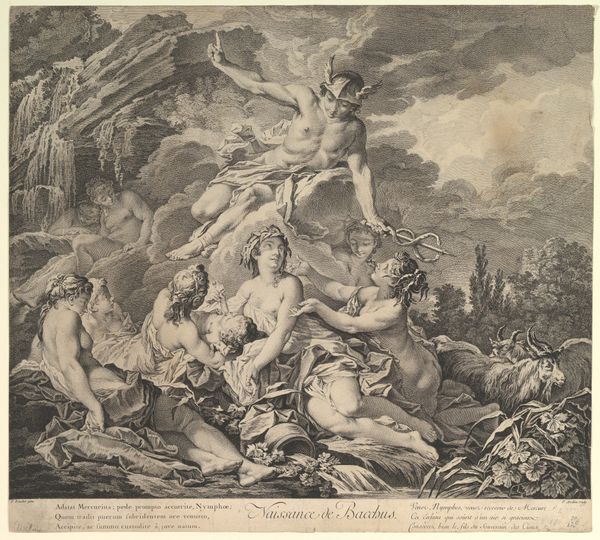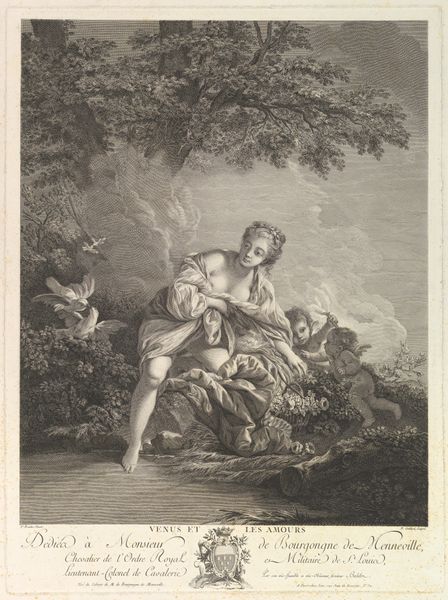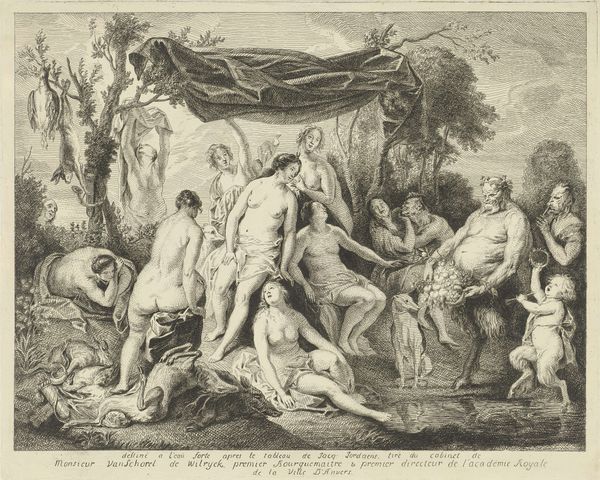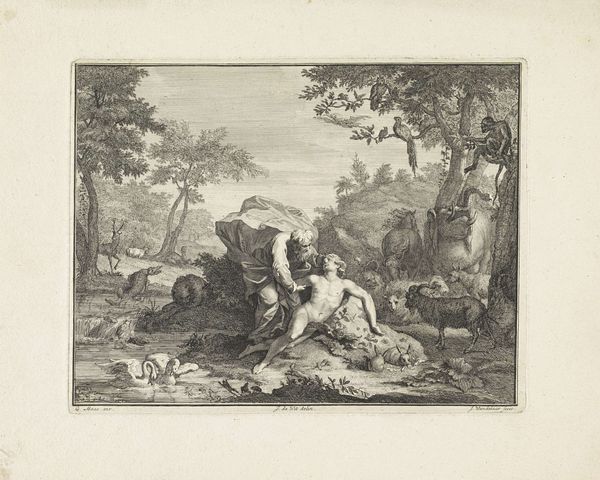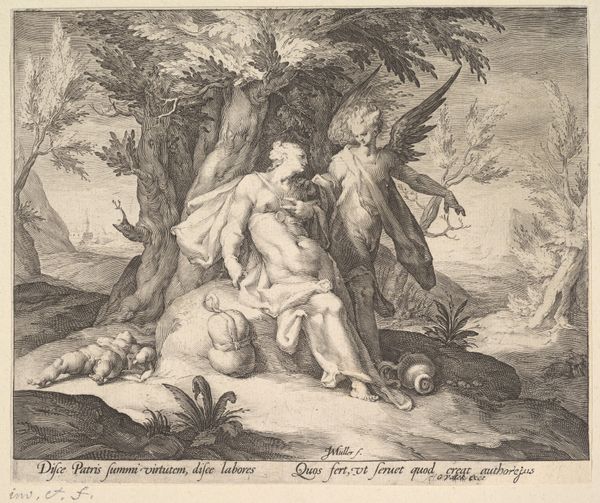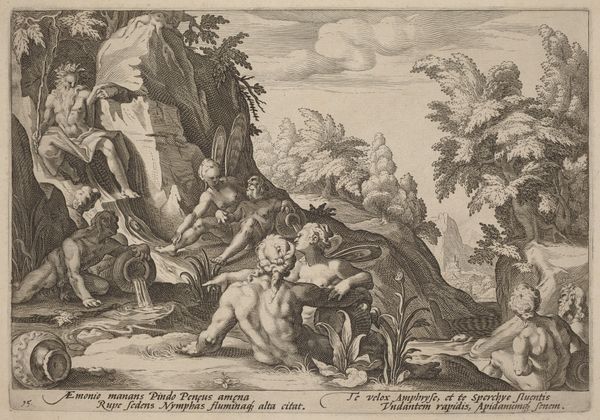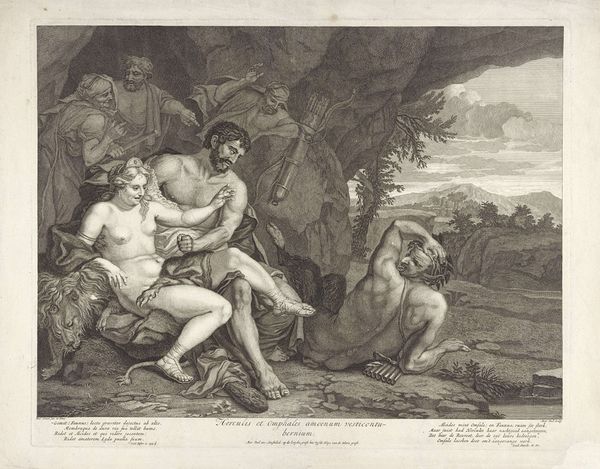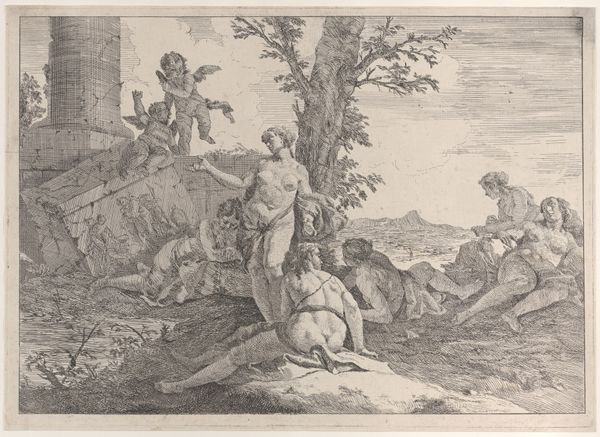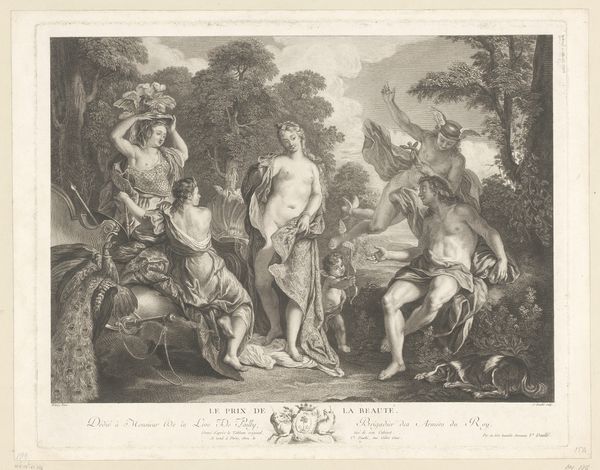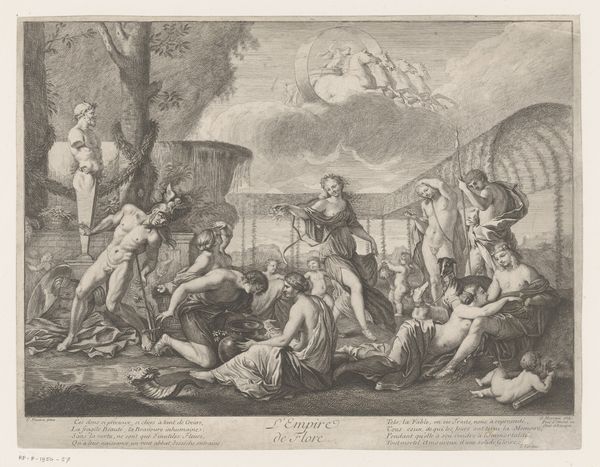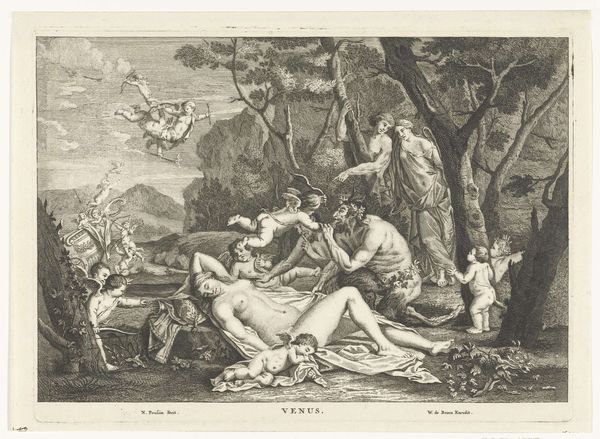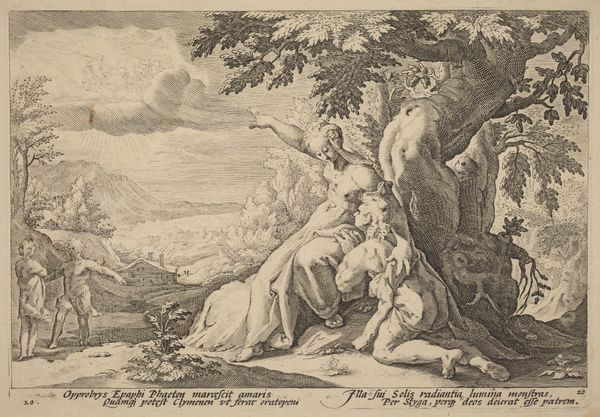
The Good Samaritan (St. Luke, Chap. 10, verse 30) 1772
0:00
0:00
Dimensions: Plate: 16 3/4 x 22 5/16 in. (42.5 x 56.7 cm) Small lower plate: 2 5/16 x 22 5/16 in. (5.8 x 56.7 cm) Sheet: 19 7/8 x 23 in. (50.5 x 58.4 cm)
Copyright: Public Domain
Editor: This is William Hogarth’s engraving, "The Good Samaritan," from 1772, currently at the Metropolitan Museum of Art. It's fascinating how much detail he achieved in a black and white print. I find the overall composition quite dynamic, even with the subject matter focusing on aid and assistance. What strikes you most when you look at it? Curator: Initially, the dramatic contrast between light and shadow arrests the eye; it accentuates the musculature of the figures. Consider the texture Hogarth creates using line alone. It's masterful in conveying depth and three-dimensionality despite the intrinsic limitations of the engraving medium. Note the compositional balance. Editor: I do see the contrast creating focus. Curator: Yes, focus on the figures of the Samaritan and the injured man at the composition's center. Then allow your gaze to be drawn to the figures that form the background. What semiotic readings could we derive through careful examination? Editor: Semiotic readings? Hmmm... perhaps how the visual weights create a narrative structure within the frame? Curator: Precisely. The linear structure establishes not only a spatial hierarchy but a temporal one, too. Hogarth constructs this moral narrative around principles of formal aesthetics, lending it a profound didactic function. Editor: That's helpful to understand how he weaves the moral narrative and the composition together. Curator: The beauty of formal analysis resides precisely in discerning this interplay of elements and recognizing how the art constitutes a sum of aesthetic considerations.
Comments
No comments
Be the first to comment and join the conversation on the ultimate creative platform.

